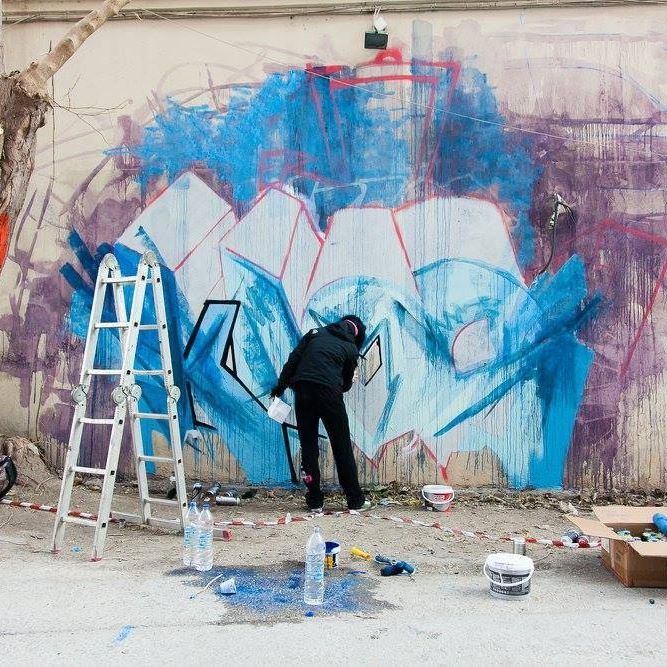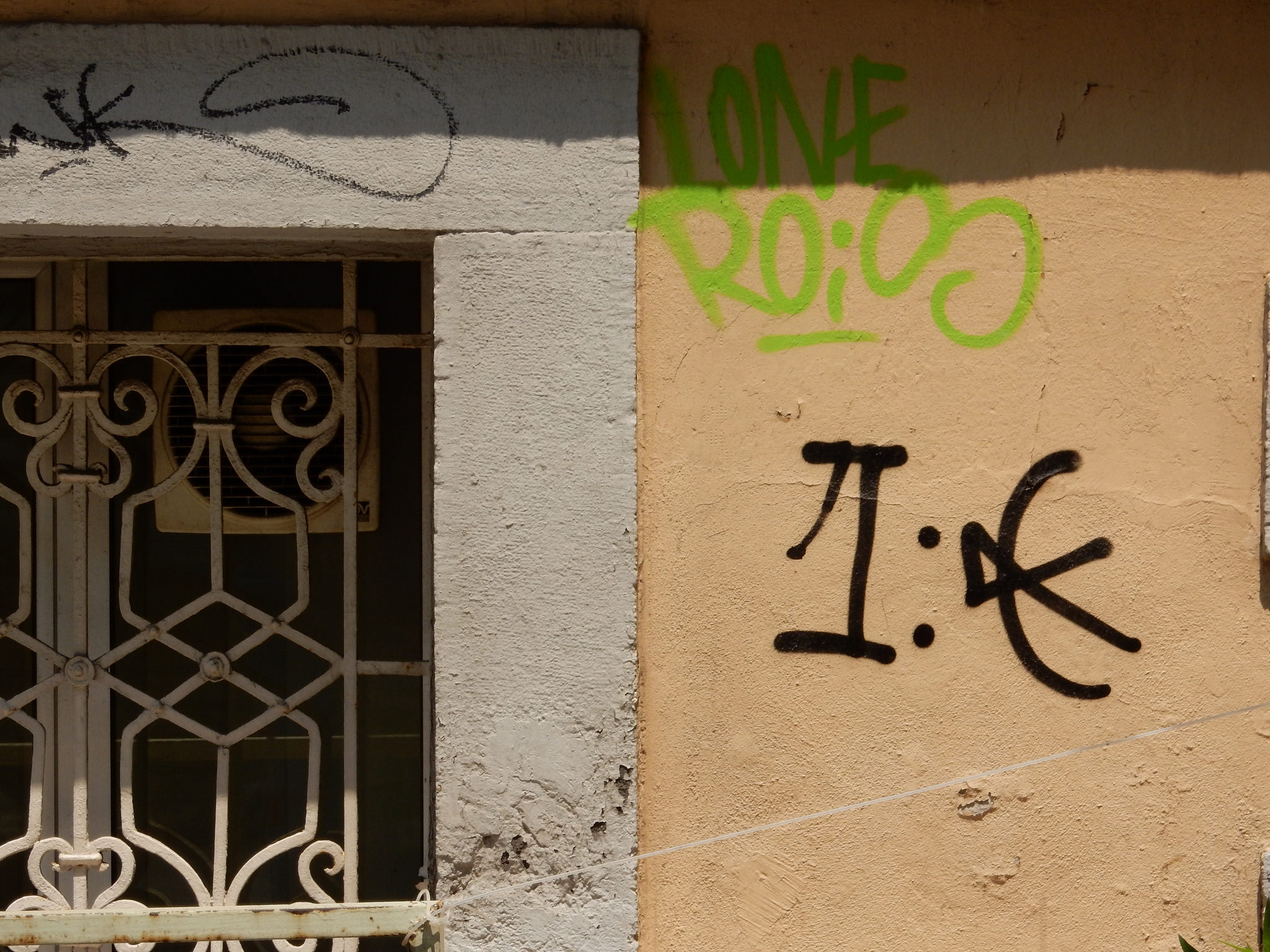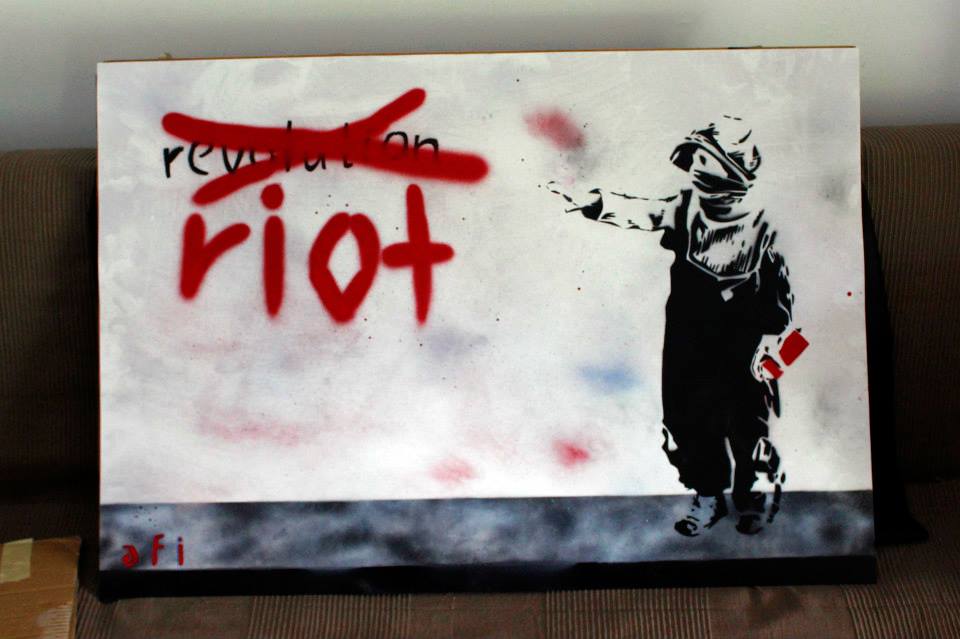Since the beginning of aesthetics of crisis in early 2013 the scope of the project and with it the range of interview partners has been steadily extending, leading to exciting new collaborations. As the city of Istanbul has been a particularly fascinating place for me in the past year, I was very happy to connect with Olga Alexopoulou, a Greek artist living and working in Istanbul. Olga works on both canvas and city walls and her works can be seen in exhibitions and art festivals all over the world. I asked her some questions on her artistic biography and creative process, the differences between street and studio work, and her relationships with Athens and Astanbul. More information about olga and her work can be found on her website, some more stories about her biography and art in this short video clip:
When did you first start doing street art? What were your initial motivations and how did you evolve stylistically?
I started at school, but the things I was doing then were embarrassingly bad…they were like cartoons that were demonstrating about the environment. Sweet, I know. Then I guess my primary focus was on my painting, and walls are just another surface to be painted on. Having said that, the things I paint on streets are different these days from what I paint in my studio, in that my street art is mostly black and white. I believe that is because the urban environment is already flooded with colors so the only way to ‘install’ a new piece in this context is to make it black and white.
What are your artistic influences?
I like the more painterly street artists, like faith47, who brings in all that classical training in painting and adopts it to her style.
How does working on the walls compare to working in the studio to you?
I definitely find painting on public walls more stressful. For one of the last pieces, I was painting with some other graffiti artists for the Istanbul street art festival, and we ended up having to confront a gang of glue-sniffers. Of course there are other times that make it all worthwhile, like when some young kids came up to me and told me that they had seen my paintings in their dreams. But most of the time, studio work is more calm and concentrated, just me, my daydreams and the studio.
How important is the spatial embedding of an artwork to you? Could you describe your creative process to me along the example of the artwork around syntagma.
The piece in Rizari park was initiated by atenistas and it was at a time when a huge percentage of the Greek public were demonstrating and in a way the question of “do we resort to violence” was hanging in the air. After suffering in the crisis for so long people feel helpless. In light of this, my work is a call to contemplation. The woman in the piece is sitting in something like a throne made of concrete, around her the landscape is turbulent and she is wearing a protestors mask. But the gesture of her hands conveys a call to contemplation, no matter how hard it can be during turbulent times.
How long have you been living in Istanbul? How do you think it compares to Athens?
I first came to Istanbul about 8 years ago after living in the UK for many years. But I grew up in Athens. Athens—because of the crisis—is experiencing a renaissance of street art. People are so disillusioned with the general political scene and the general economic decline that they have taken it to themselves to make the city more beautiful. So now all around Athens you see monumental pieces. In Istanbul the scene is different because the political climate is different. During the Gezi Park protest there was definitely a rise in graffiti. You would walk down to a protest and people were selling gas masks and spray paints for first-time graffiti users. It was more political slogans though and a lot of kids. sadly some of them got arrested, and one 13 year old kid in particular is facing 16 years in prison for graffiting “government resign, death to fascism”.
How would you describe your involvement in the local scene of Istanbul?
In Istanbul I started with a big project from the municipality to connect better with the Roma community on the Bosphorus. That was incredibly enlightening and so much fun. Then through street artist pet05 I got involved in the Istanbul street art festival and through that have been doing lots of big cool projects.
Would you say that you and your work are influenced by (local) political circumstances – e.g. the Gezi Park uprising Istanbul or the Greek crisis? Would you describe your work as political?
I believe my work has to do with the definition of ‘political’ as in a political being involved and engaged in the social sphere of their place. my pieces are usually meditative or alluding to a way of thinking that i think is necessary in times of crisis. something like trying to find calmness of thought in the middle of a storm.
—
This interview was conducted via email in January 2014.
Questions by Julia Tulke.








